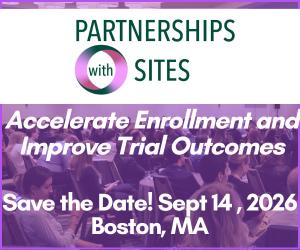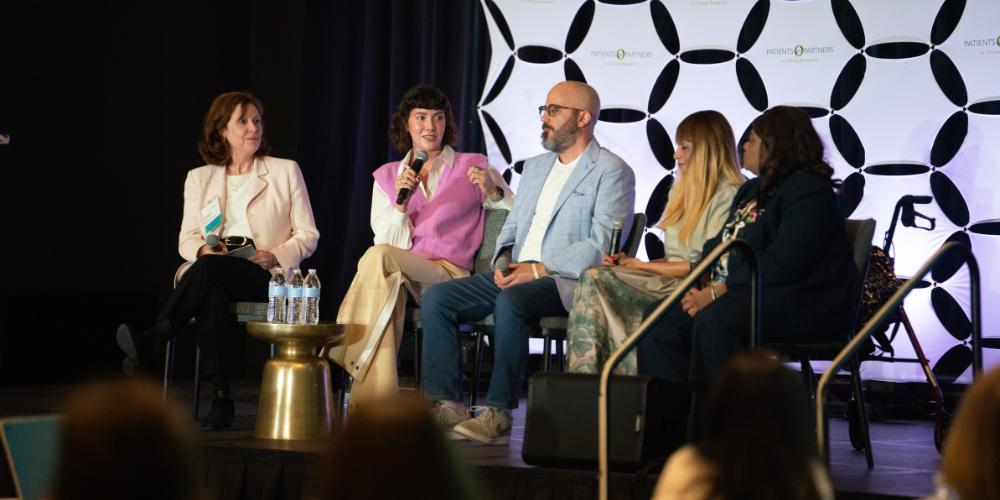Moderna on Building Its Patient Insights Framework from Scratch
Moderna is building a patient engagement framework so any team within the organization knows exactly how, when and why to reach out to patients for their insights. Rachael MacQueen, Senior Manager, Patient Centricity, tells us about the early buy-in, socialization and organization that was critical to the framework’s success.

What are you working on at Moderna?
My primary focus is ensuring that the patient voice is integrated into clinical trial design in a meaningful and systematic way. We are developing a structured framework to guide teams on how and when to incorporate patient insights into their work. A key initiative driving this effort is the Patient Voice Consortium, a cross-functional group dedicated to consolidating and leveraging patient insights and initiatives across different teams. Moderna is enhancing cross-functional collaboration to ensure that patient feedback informs decision-making across various areas of the business.
"The goal is to build a company-wide understanding of how patient insights impact decision-making at every level and how those insights can impact the work that everyone is doing."
Tell us more about the insights framework.
The framework is designed to provide clear, actionable guidance on integrating patient insights into trial design. By outlining recommended activities and processes at each stage, it helps teams consider patient insights in a meaningful way. This approach transforms patient engagement from an abstract concept into a concrete set of best practices.
Leadership within different therapeutic areas have been engaged to explore how patient insights can inform their work. The Patient Voice Consortium is also being leveraged to help expand awareness and adoption across teams that may not traditionally interact with patients. The goal is to build a company-wide understanding of how patient insights impact decision-making at every level and how those insights can impact the work that everyone is doing.
Moderna has also created a Patient Insights Knowledge Hub. How is that advancing patient centricity at Moderna?
The Knowledge Hub is an AI-supported repository designed to centralize patient-related insights, improving accessibility and usability. It consolidates data from focus groups, interviews, recruitment and retention teams, and other sources, allowing teams to access a comprehensive, searchable database of insights.
The hub was developed in collaboration with the digital development team and is currently in the prototype phase, with ongoing refinements based on team feedback. While it has already been used in select projects, efforts are underway to expand its use across the organization, ensuring that insights are easily accessible and actionable.
"By starting with a focused effort and leveraging existing resources, the team was able to demonstrate the value of a centralized repository."
What were the challenges associated with applying AI to patient insights?
One of the key challenges has been the logistical complexity of consolidating and standardizing insights from multiple sources. Ensuring that documents are tagged consistently has been a priority. Since not all insights were originally collected with standardized tags, efforts are now focused on improving consistency without adding unnecessary burdens to those gathering the data.
Maintaining the hub as a trusted, up-to-date resource is another key focus. Processes are being developed to ensure that insights remain current, relevant, and easy to retrieve, supporting the long-term goal of making patient insights a seamless part of trial design.
How did you get the buy-in to invest resources into building the hub?
The initiative began with a small-scale pilot to address the challenge of siloed insights across different groups. By starting with a focused effort and leveraging existing resources, the team was able to demonstrate the value of a centralized repository. Once the benefits became clear, such as improved access to insights and more streamlined communication, it was easier to secure broader investment to scale the initiative.
How are you engaging with patients to generate those insights?
A range of engagement activities, including interviews, focus groups, and protocol simulations, are being used to understand patient experiences and identify barriers to participation.
For example, a protocol simulation conducted for our Norovirus trial provided key insights into the home sample collection experience. Individuals in the simulation shared feedback on how to improve the experience, leading to refinements in instructional materials and kit supplies. These changes contributed to higher adherence, demonstrating the direct impact of insights on trial success.
How has gathering patient feedback impacted an activity in a clinical trial?
Feedback gathered during the Norovirus trial revealed significant challenges related to travel and accessibility, particularly for older adults in the United Kingdom. In response, mobile clinical units were introduced in coastal communities where older adults were more likely to reside.
By bringing the trial directly to trial participants, we have seen stronger recruitment rates. This initiative underscores how gathering insights can drive innovative solutions that enhance both trial experience and efficiency.
What are the main burdens to participation you’re hearing from patients?
While barriers vary by therapeutic area, some of the most frequently cited challenges include transportation difficulties, financial burdens, complex protocols, frequent site visits, and childcare responsibilities.
To address these challenges, the team takes a flexibility-first approach, evaluating each trial to determine where adjustments can be made to support diverse patient needs. Whether through remote participation options, travel accommodations, or other support mechanisms, the focus is on making trials more accessible while maintaining scientific rigor.
"As a younger organization, Moderna is in the process of building a robust data set that will showcase the long-term impact of patient insights and engagement on trial success."
What do you think Moderna does particularly well when it comes to engaging with patients?
A key strength of Moderna’s approach is our emphasis on closing the feedback loop with patients. Engagement efforts are designed to be more than just information-gathering exercises. Patients are informed about how their insights are being used to drive meaningful change.
This commitment to transparency builds trust and reinforces the value of participation. It also creates an opportunity for validation, allowing patients to provide additional feedback to ensure that solutions truly address their concerns. By maintaining an ongoing dialogue, Moderna strengthens its relationships with patients and fosters a culture of continuous improvement.
What’s next for patient centricity at Moderna?
Moderna aims to embed patient insights into clinical trials from the earliest stages of development.
To achieve this, the focus is on demonstrating the tangible value of patient insights over time. As a younger organization, Moderna is in the process of building a robust data set that will showcase the long-term impact of patient insights and engagement on trial success. As evidence accumulates, patient-centricity will become an even more deeply embedded part of the company’s approach to clinical research.








